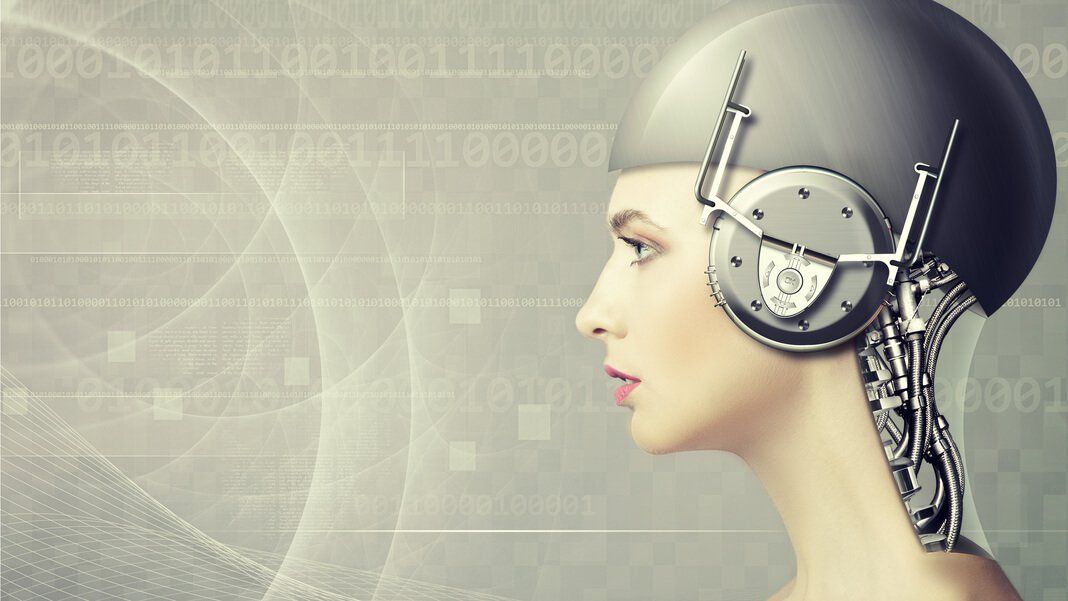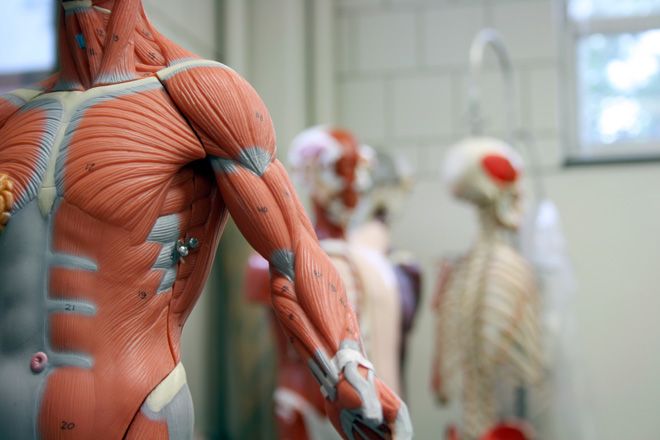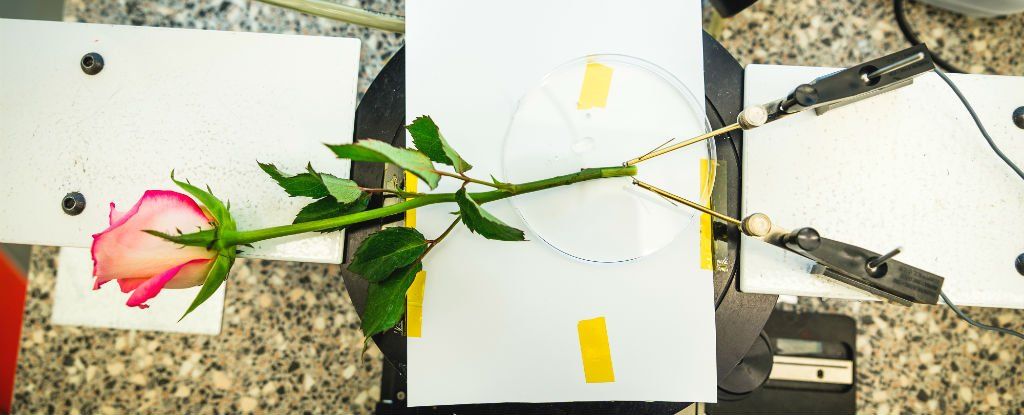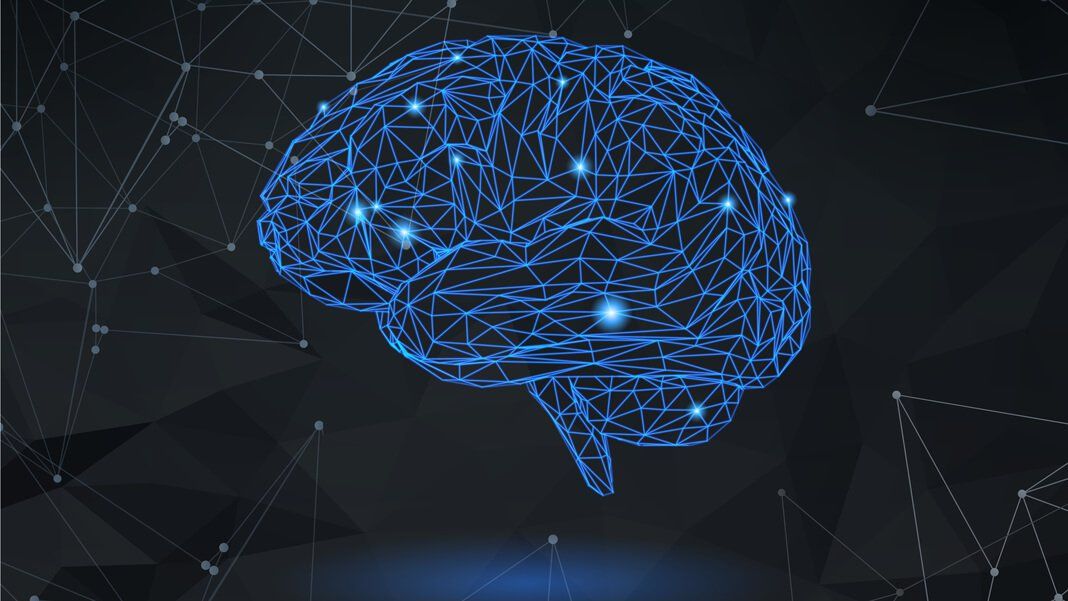You are already a cyborg! Here’s 10 ways you could merge even more with technology in the coming decade.



Part man, part machine: Researchers at the University of Oxford are making The Terminator a reality.
Pierre-Alexis Mouthuy and Andrew Carr, of the Oxford Musculoskeletal Biomedical Research Unit, test medical technology by dressing robots in human flesh.
The cyborgs “wear” tissue grafts to help develop artificial muscles and tendons before transplantation.

A team of engineers at the University of California San Diego and La Jolla-based startup Nanovision Biosciences Inc. have developed the nanotechnology and wireless electronics for a new type of retinal prosthesis that brings research a step closer to restoring the ability of neurons in the retina to respond to light. The researchers demonstrated this response to light in a rat retina interfacing with a prototype of the device in vitro.
They detail their work in a recent issue of the Journal of Neural Engineering. The technology could help tens of millions of people worldwide suffering from neurodegenerative diseases that affect eyesight, including macular degeneration, retinitis pigmentosa and loss of vision due to diabetes.
Despite tremendous advances in the development of retinal prostheses over the past two decades, the performance of devices currently on the market to help the blind regain functional vision is still severely limited—well under the acuity threshold of 20/200 that defines legal blindness.

More news on the new #transhumanism book just out: To Be a Machine. http://www.signature-reads.com/2017/03/7-best-books-artificial-intelligence/ & https://undark.org/article/30154-2/ & http://bookforum.com/blog/17478
Decades ago, if you were writing about robots, it was probably in one of two forms: either a science fiction narrative, or something short about the handful of robots that could be purchased for home or recreational use. Now things have changed. Home devices can recognize and respond to speech, prosthetic technology has been dramatically advanced, and our very understanding of what constitutes a robot has significantly changed.
With these advances in technology have come other questions, some pertaining to the nature of intelligence, some relating to the lines between humanity and machines, and still more that use our research into robotics to explore what makes us human. So, with that in mind, here’s a look at a handful of the best books on artificial intelligence, dealing with questions of robots, body modification, the Singularity, and more. Crank up Flight of the Conchords’s song set after a robot uprising and dig in.
As a robotics enthusiast, it was a special treat for me to see real future tech up close (and try it out myself). Angel also showed off some of her attachments, like one that allows her to shoot a bow and arrow.

Are we ready for cyborgs? More specifically, people with implants that enhance beyond the superficially cosmetic and into the realms of evolved beings?
Jorge Pelegrín-Borondo (Universidad de La Rioja), Eva Reinares-Lara (Universidad Rey Juan Carlos) and Cristina Olarte-Pascual (Universidad de La Rioja), in cooperation with Professor Kiyoshi Murata, from Meiji University in Tokyo, believe society is ready for this melding of (hu)man and machine.
The Spanish academics’ report “Assessing the acceptance of technological implants (the cyborg): Evidences and challenges” has just been released in the scientific journal Computers in Human Behavior. The report shows a significant proportion of those surveyed are comfortable with the coming cyborg modifications. The group are also collaborating with other academics across the world, including Professor Kiyoshi Murata, for a comparative cross-cultural study roundtable at the 2017 ETHICOMP conference this summer in Turin, Italy.

A new well written but not very favorable write-up on #transhumanism. Despite this, more and more publications are tackling describing the movement and its science. My work is featured a bit.
On the eve of the 20th century, an obscure Russian man who had refused to publish any of his works began to finalize his ideas about resurrecting the dead and living forever. A friend of Leo Tolstoy’s, this enigmatic Russian, whose name was Nikolai Fyodorovich Fyodorov, had grand ideas about not only how to reanimate the dead but about the ethics of doing so, as well as about the moral and religious consequences of living outside of Death’s shadow. He was animated by a utopian desire: to unite all of humanity and to create a biblical paradise on Earth, where we would live on, spurred on by love. He was an immortalist: one who desired to conquer death through scientific means.
Despite the religious zeal of his notions—which a number of later Christian philosophers unsurprisingly deemed blasphemy—Fyodorov’s ideas were underpinned by a faith in something material: the ability of humans to redevelop and redefine themselves through science, eventually becoming so powerfully modified that they would defeat death itself. Unfortunately for him, Fyodorov—who had worked as a librarian, then later in the archives of Ministry of Foreign Affairs—did not live to see his project enacted, as he died in 1903.
Fyodorov may be classified as an early transhumanist. Transhumanism is, broadly, a set of ideas about how to technologically refine and redesign humans, such that we will eventually be able to escape death itself. This desire to live forever is strongly tied to human history and art; indeed, what may be the earliest of all epics, the Sumerian Epic of Gilgamesh, portrays a character who seeks a sacred plant in the black depths of the sea that will grant him immortality. Today, however, immortality is the stuff of religions and transhumanism, and how these two are different is not always clear to outsiders.
Contemporary schemes to beat death usually entail being able to “upload” our minds into computers, then downloading our minds into new, better bodies, cyborg or robot bodies immune to the weaknesses that so often define us in our current prisons of mere flesh and blood. The transhumanist movement—which is many movements under one umbrella—is understandably controversial; in 2004 in a special issue of Foreign Policy devoted to deadly ideas, Francis Fukuyama famously dubbed transhumanism one of the most dangerous ideas in human history. And many, myself included, have a natural tendency to feel a kind of alienation from, if not repulsion towards, the idea of having our bodies—after our hearts stop—flushed free of blood and filled with cryonic nitrogen, suspending us, supposedly, until our minds can be uploaded into a new, likely robotic, body—one harder, better, and faster, as Daft Punk might have put it.

Humanoid robots may enhance growth of musculoskeletal tissue grafts for tissue transplant applications.
Over the past decade, exciting progress has been made in the development of humanoid robots. The significant potential future value of humanoids includes applications ranging from personal assistance to medicine and space exploration. In particular, musculoskeletal humanoids (such as Kenshiro and Eccerobot) were developed to interact with humans in a safer and more natural way (1, 2). They aim to closely replicate the detailed anatomy of the human musculoskeletal system including muscles, tendons, and bones.
With their structures activated by artificial muscles, musculoskeletal humanoids have the ability to mimic more accurately the multiple degrees of freedom and the normal range of forces observed in human joints. As a result, it is not surprising that they offer new opportunities in science and medicine. Here, we suggest that musculoskeletal robots may assist in the growth of musculoskeletal tissue grafts for tissue transplant applications.

Scientists have figured out how to inject a conducting solution into a rose cutting, and have it spontaneously form wires throughout its stem, leaves, and petals to create fully functioning supercapacitors for energy storage.
The so-called e-Plant was able to be charged hundreds of times without any loss on the performance, and the team behind the invention says it could allow us to one day create fuel cells or autonomous energy systems inside living plants.
“A few years ago, we demonstrated that it is possible to create electronic plants, ‘power plants’, but we have now shown that the research has practical applications,” says one of the team, Magnus Berggren from Linköping University in Sweden.

Wiring our brains up to computers could have a host of exciting applications – from controlling robotic prosthetics with our minds to restoring sight by feeding camera feeds directly into the vision center of our brains.
Most brain-computer interface research to date has been conducted using electroencephalography (EEG) where electrodes are placed on the scalp to monitor the brain’s electrical activity. Achieving very high quality signals, however, requires a more invasive approach.
Integrating electronics with living tissue is complicated, though. Probes that are directly inserted into the gray matter have been around for decades, but while they are capable of highly accurate recording, the signals tend to degrade rapidly due to the buildup of scar tissue. Electrocorticography (ECoG), which uses electrodes placed beneath the skull but on top of the gray matter, has emerged as a popular compromise, as it achieves higher-accuracy recordings with a lower risk of scar formation.